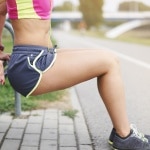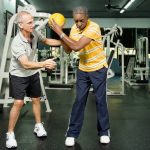Is it possible that just by being fit as a kid, you can be more financially stable as an adult?
So suggests a recent study in the ACSM’s MSSE (July 2016).
But there are many ways to earn more as you get older, and weight lifting or running marathons are not high on that list. Education is.
So what’s behind this title?

You see, kids who are fit as kids and subsequently
earn more as adults often have opportunities to play beyond their pre-adolescent years, can engage in after-school activities such as sports or recreational or even club sports, and may not have to work to help support their families. Or, if not so privileged, may be kids who’s path to success, i.e. college degrees, may come through sports participation.
So, on both ends of the socioeconomic spectrum, those who are not privileged and those who are are able to be and stay, let alone get, fit. With the many outlets that fitness supports, including more attractiveness to employers if you are leaner, supportive educational personnel like teachers and coaches, and greater access to higher education, fitness may indeed lead to higher earning potential.
Nonetheless, read this:
Purpose: This study examined the associations between childhood physical activity level and adulthood earnings.
Methods: The data were drawn from the ongoing longitudinal Young Finns Study, which was combined with register-based Finnish Longitudinal Employer–Employee Data and register-based parents’ background information from the Longitudinal Population Census of Statistics Finland. The study consisted of children who were 9 yr (n = 1257, 52% boys), 12 yr (n = 1662, 51% boys), and 15 yr (n = 1969, 49% boys) of age at the time when physical activity was measured. The children were followed until 2010, when they were between 33 and 45 yr old. Leisure-time physical activity in childhood was self-reported, whereas earnings in adulthood were register based and covered over a 10-yr period from 2000 to 2010. Ordinary least squares models were used to analyze the relationship between physical activity and earnings.
Results: Childhood physical activity level was positively associated with long-term earnings among men (P < 0.001). In more detail, a higher level of leisure-time physical activity at the age of 9, 12, and 15 yr was associated with an approximate 12%–25% increase in average annual earnings over a 10-yr period. The results were robust to controlling, e.g., an individual’s chronic conditions and body fat, parents’ education and physical activity, and family income. Among women, no relation was observed.
Conclusions: The findings provide evidence that childhood physical activity can have far-reaching positive effects on adulthood earnings. Possibilities for improving physical activity during childhood may not only promote health but also affect long-term labor market outcomes.














